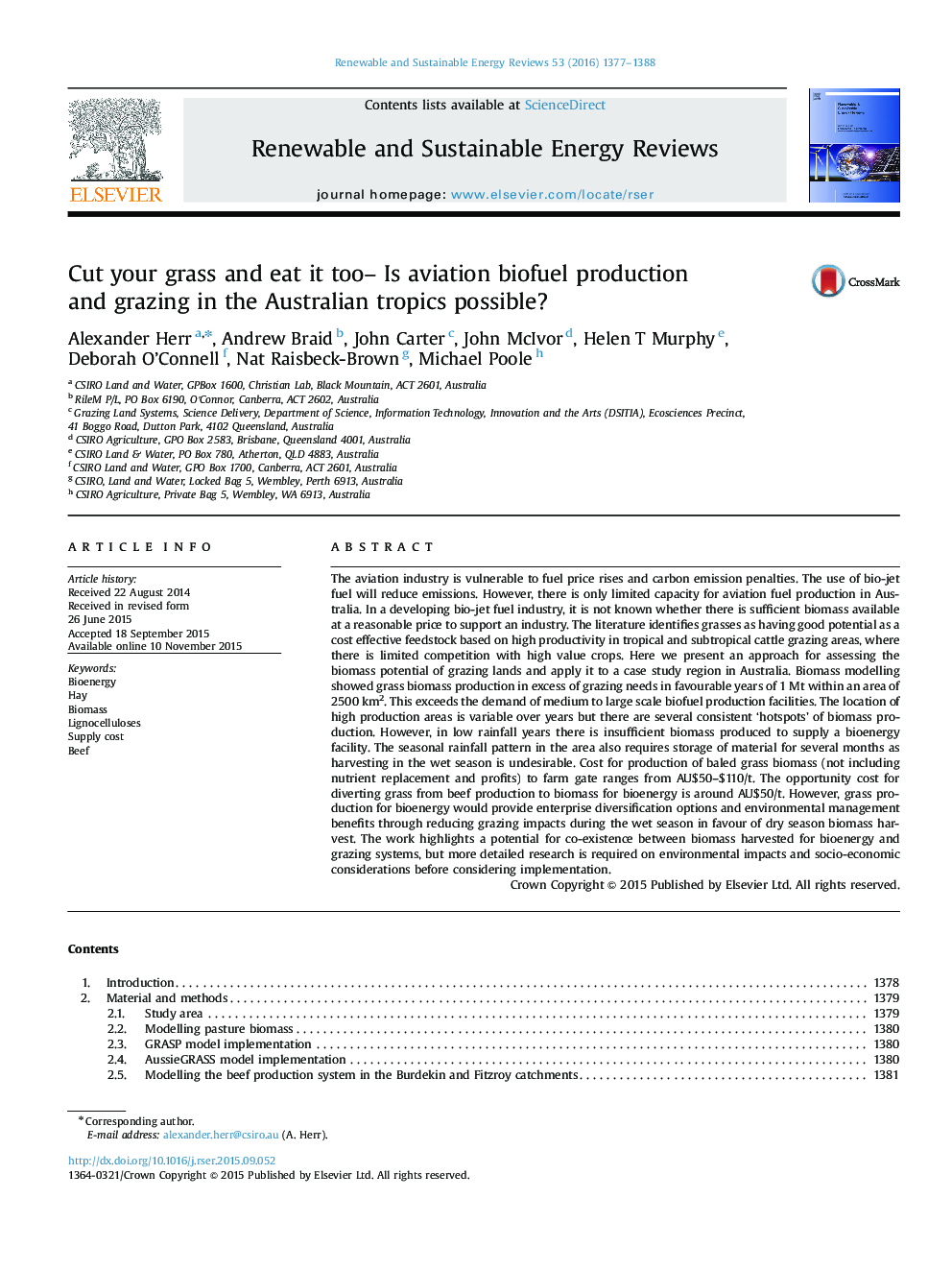| کد مقاله | کد نشریه | سال انتشار | مقاله انگلیسی | نسخه تمام متن |
|---|---|---|---|---|
| 8115927 | 1522332 | 2016 | 12 صفحه PDF | دانلود رایگان |
عنوان انگلیسی مقاله ISI
Cut your grass and eat it too- Is aviation biofuel production and grazing in the Australian tropics possible?
ترجمه فارسی عنوان
چمن خود را بریزید و آن را نیز بخورید. آیا تولید سوخت های زیستی در هواپیما در استرالیا امکان پذیر است؟
دانلود مقاله + سفارش ترجمه
دانلود مقاله ISI انگلیسی
رایگان برای ایرانیان
کلمات کلیدی
بیو انرژی، هیز، زیست توده، لیگنوسلولز، هزینه عرضه، گوشت گاو،
موضوعات مرتبط
مهندسی و علوم پایه
مهندسی انرژی
انرژی های تجدید پذیر، توسعه پایدار و محیط زیست
چکیده انگلیسی
The aviation industry is vulnerable to fuel price rises and carbon emission penalties. The use of bio-jet fuel will reduce emissions. However, there is only limited capacity for aviation fuel production in Australia. In a developing bio-jet fuel industry, it is not known whether there is sufficient biomass available at a reasonable price to support an industry. The literature identifies grasses as having good potential as a cost effective feedstock based on high productivity in tropical and subtropical cattle grazing areas, where there is limited competition with high value crops. Here we present an approach for assessing the biomass potential of grazing lands and apply it to a case study region in Australia. Biomass modelling showed grass biomass production in excess of grazing needs in favourable years of 1Â Mt within an area of 2500Â km2. This exceeds the demand of medium to large scale biofuel production facilities. The location of high production areas is variable over years but there are several consistent 'hotspots' of biomass production. However, in low rainfall years there is insufficient biomass produced to supply a bioenergy facility. The seasonal rainfall pattern in the area also requires storage of material for several months as harvesting in the wet season is undesirable. Cost for production of baled grass biomass (not including nutrient replacement and profits) to farm gate ranges from AU$50-$110/t. The opportunity cost for diverting grass from beef production to biomass for bioenergy is around AU$50/t. However, grass production for bioenergy would provide enterprise diversification options and environmental management benefits through reducing grazing impacts during the wet season in favour of dry season biomass harvest. The work highlights a potential for co-existence between biomass harvested for bioenergy and grazing systems, but more detailed research is required on environmental impacts and socio-economic considerations before considering implementation.
ناشر
Database: Elsevier - ScienceDirect (ساینس دایرکت)
Journal: Renewable and Sustainable Energy Reviews - Volume 53, January 2016, Pages 1377-1388
Journal: Renewable and Sustainable Energy Reviews - Volume 53, January 2016, Pages 1377-1388
نویسندگان
Alexander Herr, Andrew Braid, John Carter, John McIvor, Helen T Murphy, Deborah O'Connell, Nat Raisbeck-Brown, Michael Poole,
